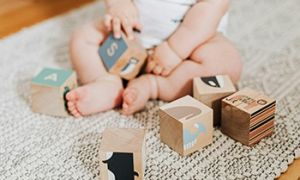Quality Area 3 of the National Quality Standard focuses on the physical environment.
The physical environment is critical to:
• contributing to children’s wellbeing, creativity and developing independence
• providing a diverse range of experiences that promote children’s learning and
development
• keeping children safe
• creating/organising spaces to reduce the risk of injury.
Each standard and element is represented by outcomes that contribute to the standard being achieved within the service. The following is a list of outcomes under each element within QA3, that can help services identify if they are achieving Quality Area 3. It also includes documentation to support each element. This list can be used as a guide for Self-Assessment purposes and the development of the Quality Improvement Plan
3.1 - The design of the facilities is appropriate for the operation of a service.
3.1.1 – Outdoor and indoor spaces, buildings, fixtures and fittings are suitable for their purpose, including supporting the access of every child.
This can be achieved by:
• appropriately sized and equipped indoor and outdoor spaces
• a physical environment that is safe and includes adequate space for solitary play, and for children to work, play and talk together in small and large groups
• outdoor spaces with shaded areas that meet the recommendations of relevant recognised authorities for protection from the sun
• environments designed to support each child’s access and assist educators to, adequately supervise children, group children in ways that minimise the risk of injury and conflict, reduce prolonged exposure to excess noise, and promote children’s learning and development
• fencing that provides safety
• facilities that enable interaction and convenient access between indoor and
• outdoor spaces, including toilet (and nappy-changing, if applicable) and hand-washing facilities
• a balance of natural and artificial lighting, adequate ventilation and fresh air
• appropriate areas for food preparation and storage
• quiet, comfortable and well-ventilated areas for sleeping and resting
• space available for administrative functions, private conversations and consultation with families and for educator and staff breaks
• facilities designed or adapted to support access by every child, family, educator and staff member, including adaptive equipment to support the inclusion of all children
Documentation to support this includes:
• the service’s approach to grouping children
• plans of indoor and outdoor areas, including information about soft fall plans that show an evaluation of and changes to the placement of furniture and equipment, if available
• where the service shares multi-purpose areas with a school, documented risk assessment of the physical environment in relation to, access to, and use of, multipurpose areas, the impact of multi-purpose areas on service delivery, the service’s approach to sharing the multi-purpose areas with the school
• the service’s registration documentation and assessments of educators’ approved premises
3.1.2 – Premises, furniture and equipment are safe, clean and well maintained.
This can be achieved by:
• premises, furniture and equipment that are safe, clean and well maintained
• educators regularly conducting safety checks and monitoring the maintenance of buildings and equipment
• educators following safety advice from recognised authorities and manufacturers when arranging equipment, furniture and experiences
• areas used by children that are regularly cleaned
Documentation to support this includes:
• documented procedures, correspondence and schedules relating to, maintenance and safety checks, the cleaning of buildings, premises, furniture and equipment, adhering to manufacturers’ advice when using and cleaning furniture and equipment
• documents that confirm equipment meets Australian Standards, for example for cots, other bedding equipment and accessories
• risk assessments of the physical environment
• where relevant, a management plan that is in place to protect the safety of children, families and service staff while major work is occurring at the service
3.2 – The service environment is inclusive, promotes competence and supports exploration and play-based learning.
3.2.1 – Outdoor and indoor spaces are organized and adapted o support every child’s participation and to engage every child in quality experiences in built and natural environments.
This can be achieved by:
• clear pathways that direct children and adults around rather than through areas being used by others
• spaces organised to ensure that routine activities (such as toileting, nappy changing, eating and sleeping) promote positive interactions and opportunities for learning
• safe shelving and storage areas from which children can access equipment and resources that are age and capability appropriate
• challenging elements of outdoor and indoor environments that allow for experiences that scaffold children’s learning and development and offer opportunities for appropriate risk-taking and risky play
• children actively engaged in a variety of rich, meaningful, inquiry-based experiences in both indoor and outdoor environments, with appropriate levels of challenge to support exploration and experimentation
• children initiating their own experiences using equipment and resources that they can access independently
• children exploring relationships with living things and observing, noticing and responding to change
• children being encouraged to use their senses to explore natural and built environments
• children accessing areas with natural features such as plants, trees, edible gardens, sand, rocks, mud and water
• educators, setting up and adapting the indoor and outdoor environments to, offer both built and natural features and structures, meet the range of ages, interests and abilities of all children
• facilitate the inclusion of every child and support every child to be able to participate in all daily experiences
• promote small and large group interactions and meaningful play and leisure
• stimulate and reflect children’s interests
• assist children to function autonomously in distinct learning or interest areas
• encourage a free flow of activity throughout the day
• facilitate positive interactions between children, educators and families
• enable small groups of children to work together on their own projects
• support children to create their own games and experiences
Documentation to support this includes:
• documented learning programs that pay equal attention to planning outdoor and indoor environments to support children’s learning outcomes and extend on child-led learning, outline opportunities for children to engage in outdoor and indoor experiences, such as dramatic play, construction, music and exploration
• incorporate opportunities for children to, be active and wholly engaged for long periods of uninterrupted play, spend time in a quiet area away from other children if they wish, choose whether they wish to participate in large and small group activities
• the statement of philosophy that describes the service’s approach to inclusion
• documented evidence that indicates the educational leader, nominated supervisors, educators and co-ordinators work collaboratively with family members, specialists and/or resource agencies to plan for the inclusion of children with additional needs, access adaptive equipment to support children’s requirements, facilitate access to support services required while the child is at the service
• evidence that strategies are in place to ensure that children in residences without direct access to outdoor environments—for example, high-rise units— have opportunities to access outdoor environments
3.2.2 – Resources, materials and equipment allow for multiple uses, are sufficient in number and enable every child to engage in play-based learning.
This can be achieved by:
• resources, materials and equipment in the indoor and outdoor environment that children can explore and use freely in their play, which are sufficient in variety and number to meet the range of interests, ages and abilities of children
• resources are organised in ways that ensure appropriate and effective implementation of the program
• resources offer a range of challenges and experiences that reflect the breadth of ages, interests and capabilities of children who are sharing the environment
• resources are flexible and can be rearranged or adjusted to provide additional interest, variety and challenge, are suitable for promoting play and leisure-based learning
• resources stimulate children’s curiosity
• resources provide many sensory experiences
• resources encourage children to explore, discover and experiment
• resources are challenging and encourage children to take appropriate risks
• children, being supported to take on challenges and try new activities/experiences
• children using a range of equipment and resources to engage in physical experiences that assist them to develop movement, coordination, balance, flexibility and strength
• children using a range of commercial, natural, recycled and homemade materials to support their learning in a range of ways—for example, to express meaning using visual arts, dance, drama and music, explore literacy in a range of ways, explore numeracy concepts such as sorting, categorising, ordering and comparing collections of materials
• children experiment with different technologies
• children use their imagination and make up their own games
• children are involved in completing day-to-day tasks, such as preparing and cooking food, caring for living things and being involved in the care of the environment
• educators enhancing child-initiated experiences by providing additional resource and, where appropriate, participating in and extending children’s play
• educators choosing resources, materials and equipment with children and using them in a way that supports children’s sense of belonging, relationships, creativity and learning
• providing sufficient time and resources for children to initiate and become actively involved in experiences
• introducing appropriate tools, technologies and media to enhance children’s learning
• demonstrating the potential of resources to children and suggesting new and different ways to use them
• providing resources to support active learning and open-ended imaginative play
• structuring the environment so that it is flexible to allow children to move resources and equipment to extend learning opportunities
• using outdoor environments not only as places for children to release energy and engage in physical activity
Documentation to support this includes:
• documentation and learning programs that demonstrate links between the arrangement and choice of resources, materials and equipment and learning outcomes for children
• plans for the arrangement of indoor and outdoor spaces to create inviting learning environments and documentation of how children’s ideas have influenced these plans
• photographs of children using materials and equipment in a variety of ways
3.2.3 – The service cares for the environment and supports children to become environmentally responsible.
This can be achieved by:
• children being supported to appreciate and care for natural and constructed environments
• children interacting with vegetation and natural materials in the environment
• children exploring insects and animals in their habitats to develop their understanding of biodiversity
• children participating in environmentally sustainable practices that support their engagement with and respect for the natural environment, increase their awareness of the impact of human activity
• educators developing environmental awareness and programs as a platform for ongoing environmental education
• educators using different ways to incorporate animals and plants into the program to support children’s understanding of ecology and the environment
• educators fostering children’s capacity to understand and respect the natural environment and the interdependence between people, plants, animals and the land
• educators sharing information and supporting children to access resources about the environment and the impact of human activities on environments
• spaces that promote the development of life skills, such as growing and preparing food, waste reduction and recycling and children being actively engaged in these experiences
• the service’s environmental strategy being implemented
Documents to support this include:
• documentation of children’s learning about environmental and sustainability issues
• policies that promote children’s understanding of their responsibility to care for the environment and the development of life skills (such as growing and preparing food, waste reduction and recycling)
• planning documents that support children’s learning through investigation and exploration of the natural environment
• photographs and displays highlighting children’s understanding and learning of the natural environment, including their contributions
Please note that this is to be used as a general guideline only. Please read the Guide To The NQS for more detailed information of what is required for each standard.
Reference:
New Guide To The National Quality Framework, Australian Children’s Education and Care Quality Authority.


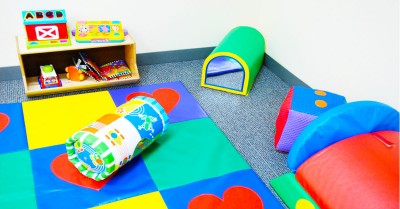

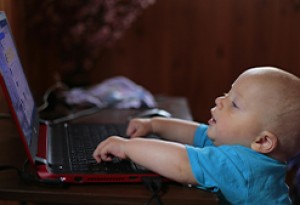
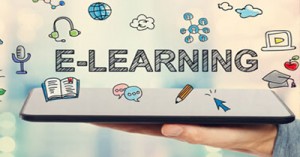
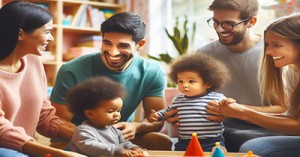
 Here is the list of the EYLF Learning Outcomes that you can use as a guide or reference for your documentation and planning. The EYLF
Here is the list of the EYLF Learning Outcomes that you can use as a guide or reference for your documentation and planning. The EYLF The EYLF is a guide which consists of Principles, Practices and 5 main Learning Outcomes along with each of their sub outcomes, based on identity,
The EYLF is a guide which consists of Principles, Practices and 5 main Learning Outcomes along with each of their sub outcomes, based on identity, This is a guide on How to Write a Learning Story. It provides information on What Is A Learning Story, Writing A Learning Story, Sample
This is a guide on How to Write a Learning Story. It provides information on What Is A Learning Story, Writing A Learning Story, Sample One of the most important types of documentation methods that educators needs to be familiar with are “observations”. Observations are crucial for all early childhood
One of the most important types of documentation methods that educators needs to be familiar with are “observations”. Observations are crucial for all early childhood To support children achieve learning outcomes from the EYLF Framework, the following list gives educators examples of how to promote children's learning in each individual
To support children achieve learning outcomes from the EYLF Framework, the following list gives educators examples of how to promote children's learning in each individual Reflective practice is learning from everyday situations and issues and concerns that arise which form part of our daily routine while working in an early
Reflective practice is learning from everyday situations and issues and concerns that arise which form part of our daily routine while working in an early Within Australia, Programming and Planning is reflected and supported by the Early Years Learning Framework. Educators within early childhood settings, use the EYLF to guide
Within Australia, Programming and Planning is reflected and supported by the Early Years Learning Framework. Educators within early childhood settings, use the EYLF to guide When observing children, it's important that we use a range of different observation methods from running records, learning stories to photographs and work samples. Using
When observing children, it's important that we use a range of different observation methods from running records, learning stories to photographs and work samples. Using This is a guide for educators on what to observe under each sub learning outcome from the EYLF Framework, when a child is engaged in
This is a guide for educators on what to observe under each sub learning outcome from the EYLF Framework, when a child is engaged in The Early Years Learning Framework describes the curriculum as “all the interactions, experiences, activities, routines and events, planned and unplanned, that occur in an environment
The Early Years Learning Framework describes the curriculum as “all the interactions, experiences, activities, routines and events, planned and unplanned, that occur in an environment
